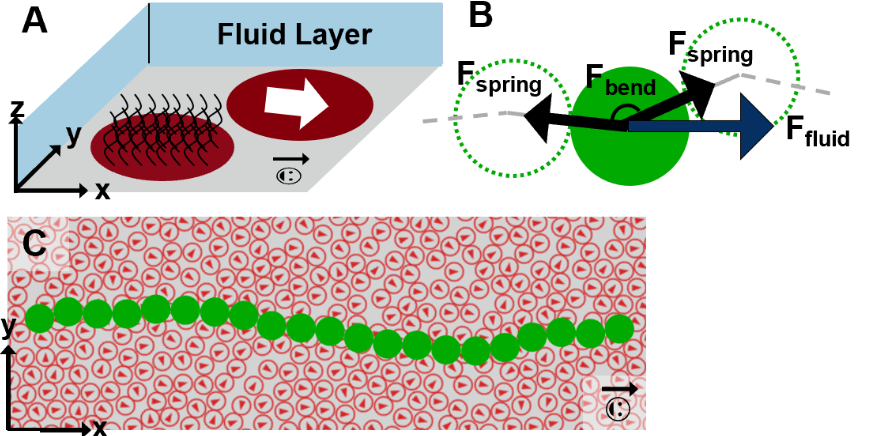
Title: Fluctuating Flows induce Preferred Mucus-Strand Orientations for Airway Clearance
Speaker: Joost de Graaf (Utrecht Univeristy)
Abstract:
The airways are covered by an inhomogeneous viscoelastic mucus layer, which traps inhaled pathogens and particles. This can be cleared through coughing, which has recently received much attention in terms of disease spread. Generally speaking, however, clearance is a continuous process, wherein the entire mucus layer is transported toward the oral cavity by the beating motion of cilia in multi-ciliated epithelial cells that line the surface of the trachea and bronchi. This is referred to as mucuociliary transport (MCT). Due to MCTs relevance in disease prevention and progression, e.g., cystic fibrosis, the last decade has seen a surge in experimental and numerical studies into this topic.
In large mammals, transported mucus is partially made of MUC5B mucins. These millimetric strands with a diameter between 5−50 μm are mainly produced in submucosal glands. Recently, Fischer et al. experimentally showed that MUC5B strands are crucial in initiating the movement of larger inhaled particles [JCI Insight 4 (2019)]: strands were argued to interact with each other and thereby form a complex network, which adheres to the introduced debris and collectively provides sufficient pull to dislodge these. Key to the formation of a MUC5B network is reorientation, as strands emerge from submucosal glands with their long axis directed along the global flow toward the oral cavity.
In this presentation, I will provide a detailed understanding of a crucial step in initiating the clearance of mammalian airways. This is accomplished through biophysically inspired computational fluid dynamics modelling of this multi-scale problem, see the figure for the strand and background properties. We find that a purely hydrodynamic mechanism of reorientation exists and that transport orthogonal to the flow is stable. Surprisingly, this dynamics and stabilization is induced by disordered flows originating from the underlying orientational variation in the multi-ciliated cells that drive MCT. This result runs counter to the general intuition that disorder should act in a destabilizing/disruptive manner. We further confirm our finding using a simple theoretical model. This analysis indicates that our finding is not only robust, but that the underlying concept has a high potential for being transferable to other microfluidic settings, such as man-made (lab-on-a-chip) devices.
The event will take place in C4.174 and a zoom link will be sent to the CSM mailing list.